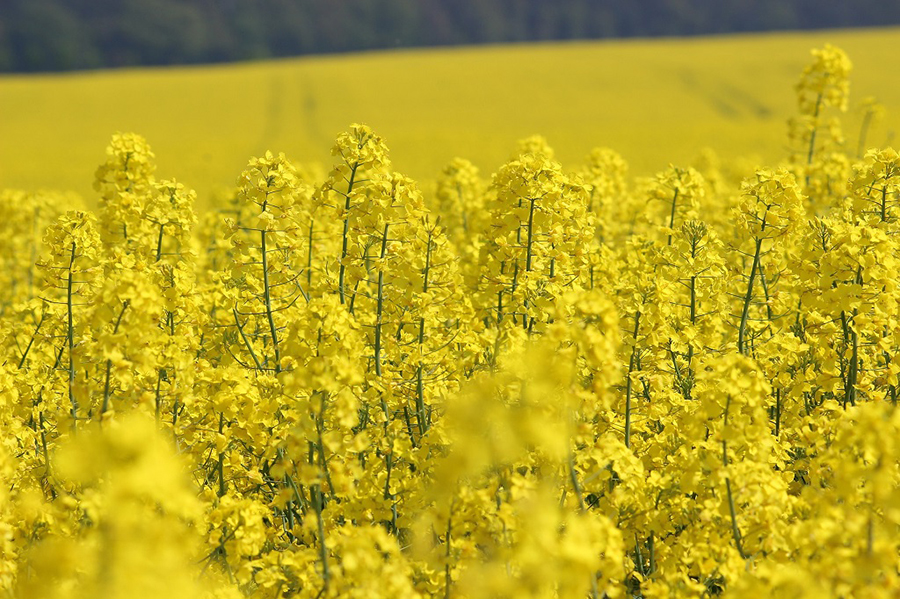Spring oilseed rape interest grows in spring 2020
24th February 2020
For a growing number of farmers, spring oilseed rape seed (SOSR) is being bought, being seen as a viable option because it provides a break crop option and it isn’t susceptible to Cabbage Stem Flea Beetle (CSFB).
- Spring oilseed rape of growing interest for farmers
- Spring oilseed rape isn’t susceptible to cabbage stem flea beetle (CSFB)
- Early vigour is key for spring oilseed rape
With many farms having recorded over 50% of their annual average rainfall between September and December 2019, there are many bare acres looking to be sown.
For a growing number of farmers, spring oilseed rape seed (SOSR) is being bought, being seen as a viable option because it provides a break crop option and it isn’t susceptible to Cabbage Stem Flea Beetle (CSFB).
“We really feel for farmers in this situation, because it is having a knock-on effect,” says Dr Carol Norris from BASF. “As a consequence of the demand for seed, crop and variety options are limited or expensive. Spring oilseed rape is an option, because there is seed available, and some have had experience of growing it in the past, albeit with older, conventional varieties.”
She says that what is important to remember is that CSFB doesn’t affect SOSR because the life cycle of the pest fits the winter growing season.
“There is another species of flea beetle that affects SOSR which, at the moment at least, is susceptible to pyrethroids, which isn’t the case with the main, overwintering species.
“Added to this, at the recent United Oilseeds/AHDB seminar, speakers suggested that if farmers grow SOSR in large blocks, as opposed to the current susceptible small pockets of the crop, the impact of pollen beetle is greatly reduced.”
For those looking at spring oilseed rape as an option, Dr Norris says that only vigorous hybrids will fit, “you need a crop that is going to grow away fast in the spring, in order to outgrow spring weeds.
Barry Barker from Agrii said that their business strongly believes that vigour is key to the successful establishment of Spring Oilseed Rape. They developed a unique vigour test for the crop and this is independently carried out on the seed stocks they sell. InVigor hybrids have consistently been at the top of the test results including the stocks available for this spring.“
She adds that maximising income from the crop is paramount, making high oil content varieties an essential choice criterium. Added to this she says that, as challenging as it might be this spring, seedbed conditions need to be right.
“A stale seedbed at the start is key, then you want a good, even seedbed and some moisture to help the seed get up and away. Drill at the right time resisting the temptation to drill too early.”
She recommends that late March or early April are best when soil temperatures are warm enough – around 9-10°C – to give the crop a quick start, and that the minimum soil pH should be 6-6.5.
“It’s also important to use a higher seed rate than for winter OSR – a rate of 80-90 seeds/m2, to achieve a plant population of 70 plants/m2 should be the target, although some people have been experimenting with lower seed rates.”
Her suggestion is that Performer, from BASF’s InVigor range is a good option; “it is top of the 2020 SOSR Descriptive List. It has outstanding oil content, is of medium maturity and has excellent lodging resistance.
“Performer also has the early vigour associated with the InVigor range which means that it will grow away fast,” she adds.
Her other important agronomic guidelines are to use a residual herbicide to remove early weed competition and to apply split doses of nitrogen at sowing and emergence, at a rate of 100kg/ha and 150kg/ha respectively.
Finally, she warns to watch out for pests. “Monitor and be prepared to act where necessary to treat for slugs, pigeons and flea beetle as the crop emerges, and for pollen beetle at green bud stage.”

